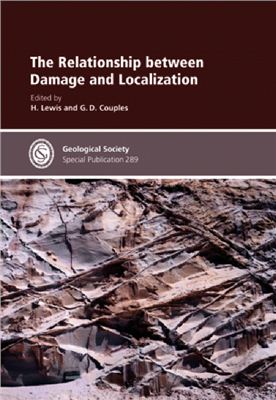Geological Society of London, 2007, 247 pages, ISBN: 1862392366
The many kinds of porous geomaterials (rocks, soils, concrete, etc.) exhibit a range of responses when undergoing inelastic deformation. In doing so they commonly develop well-ordered fabric elements, forming fractures, shear bands and compaction bands, so creating the planar fabrics that are regarded as localization. Because these induced localization fabrics alter the bulk material properties (such as permeability, acoustic characteristics and strength), it is important to understand how and why localization occurs, and how it relates to its setting. The concept of damage (in several uses) describes both the precursor to localization and the context within which it occurs. A key theme is that geomaterials display a strong material evolution during deformation, revealing a close linkage between the damage and localization processes.
This volume assembles perspectives from a number of disciplines, including soil mechanics, rock mechanics, structural geology, seismic anisotropy and reservoir engineering. The papers range from theoretical to observational, and include contributions showing how the deformed geomaterials emergent bulk characteristics, like permeability and seismic anisotropy, can be predicted. This book will be of interest to a wide range of geoscientists and engineers who deal with characterization of deformed materials.
Introduction: the relationship between damage and localization
Damage and localization: two key concepts in rock deformation studies
The mechanics of fault distribution and localization in high-porosity sands, Provence, France
Strain localization in geomaterials
The progression from damage to localization of displacement observed in laboratory testing of porous rocks
Microscale damage evolution in compacting sandstone
Influence of grain size and geothermal gradient on the ductile-to-brittle transition in arenaceous sedimentary rocks: implications for fault structure and fluid flow
Fracture aperture, length and patte geometry development under biaxial loading: a numerical study with applications to natural, cross-jointed systems
Permeability of fault rocks from the Median Tectonic Line in Ohshika-mura, Nagano, Japan as studied by pressure-cycling tests
Insights into the faulting process from numerical simulations of rock-layer bending
Improved seismic identification of inter-fault damage via a linked geomechanics–seismic approach
Localization processes in a coupled hydrogeomechanically sensitive fractured system
Proximity to a critical point: evidence from, and implications for, hydrocarbon reservoirs
The many kinds of porous geomaterials (rocks, soils, concrete, etc.) exhibit a range of responses when undergoing inelastic deformation. In doing so they commonly develop well-ordered fabric elements, forming fractures, shear bands and compaction bands, so creating the planar fabrics that are regarded as localization. Because these induced localization fabrics alter the bulk material properties (such as permeability, acoustic characteristics and strength), it is important to understand how and why localization occurs, and how it relates to its setting. The concept of damage (in several uses) describes both the precursor to localization and the context within which it occurs. A key theme is that geomaterials display a strong material evolution during deformation, revealing a close linkage between the damage and localization processes.
This volume assembles perspectives from a number of disciplines, including soil mechanics, rock mechanics, structural geology, seismic anisotropy and reservoir engineering. The papers range from theoretical to observational, and include contributions showing how the deformed geomaterials emergent bulk characteristics, like permeability and seismic anisotropy, can be predicted. This book will be of interest to a wide range of geoscientists and engineers who deal with characterization of deformed materials.
Introduction: the relationship between damage and localization
Damage and localization: two key concepts in rock deformation studies
The mechanics of fault distribution and localization in high-porosity sands, Provence, France
Strain localization in geomaterials
The progression from damage to localization of displacement observed in laboratory testing of porous rocks
Microscale damage evolution in compacting sandstone
Influence of grain size and geothermal gradient on the ductile-to-brittle transition in arenaceous sedimentary rocks: implications for fault structure and fluid flow
Fracture aperture, length and patte geometry development under biaxial loading: a numerical study with applications to natural, cross-jointed systems
Permeability of fault rocks from the Median Tectonic Line in Ohshika-mura, Nagano, Japan as studied by pressure-cycling tests
Insights into the faulting process from numerical simulations of rock-layer bending
Improved seismic identification of inter-fault damage via a linked geomechanics–seismic approach
Localization processes in a coupled hydrogeomechanically sensitive fractured system
Proximity to a critical point: evidence from, and implications for, hydrocarbon reservoirs

